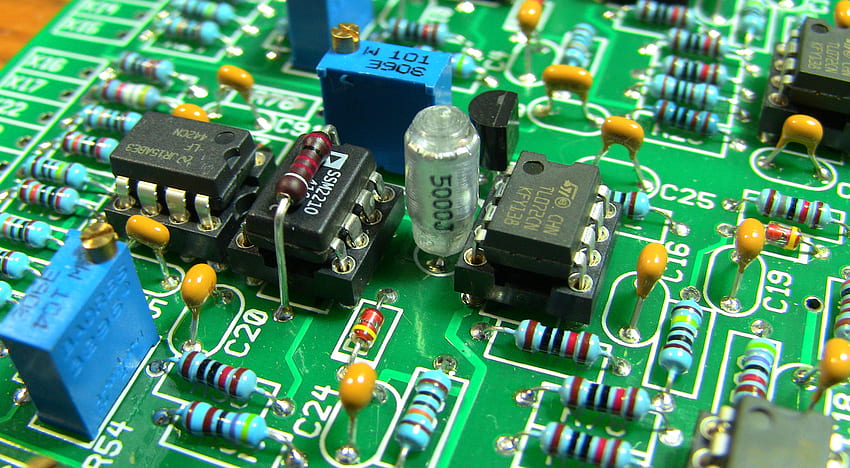
In today’s rapidly evolving industrial landscape, automation and control technologies have emerged as essential tools for businesses seeking to enhance productivity and efficiency. One sector where these advancements are making a significant impact is the field of lighting. Through the integration of industrial automation and control, lighting systems are being revolutionized, paving the way for improved energy management, increased safety, and enhanced user experience.
At the forefront of this transformation is eyby.com, a dedicated platform for building and construction supplies. With a vast array of products across diverse categories such as building supplies, cables, electrical items, and more, eyby.com encompasses the realm of industrial automation and control, including lighting solutions. By embracing these cutting-edge technologies, businesses can unlock the potential for smarter, more sustainable lighting systems that support their overall operational objectives.
By harnessing industrial automation and control in the realm of lighting, companies stand to benefit from a multitude of advantages. From intelligent sensor-based lighting systems that optimize energy usage based on occupancy and natural lighting conditions, to centralized control mechanisms that allow for synchronized adjustments and monitoring across an entire facility, the possibilities are extensive. With eyby.com serving as a comprehensive platform, businesses can access a diverse range of products and solutions tailored to their specific needs, propelling them towards a brighter, more efficient future.
Benefits of Industrial Automation & Control in Lighting
Industrial automation and control in lighting offer numerous advantages for businesses and organizations. With the integration of smart technology and advanced control systems, lighting can be optimized for enhanced productivity and energy efficiency.
Firstly, industrial automation and control in lighting allow for precise and customizable illumination. With automated systems, lighting levels can be adjusted according to specific requirements, providing the ideal brightness for various tasks and environments. This not only enhances visibility but also promotes employee comfort and well-being, ultimately leading to increased productivity.
Furthermore, automation and control systems enable efficient energy management. By utilizing sensors, timers, and advanced control algorithms, lighting can be automatically regulated based on occupancy, daylight availability, and other factors. This results in significant energy savings by eliminating unnecessary lighting and reducing electricity consumption. Over time, these energy-efficient practices contribute to cost reduction and promote sustainable operations.
Lastly, industrial automation and control in lighting offer improved maintenance and monitoring capabilities. With the integration of IoT (Internet of Things) technology, lighting systems can be connected to a centralized control platform. This enables real-time monitoring of performance, instant fault detection, and continuous status updates. By proactively identifying issues, maintenance efforts can be streamlined, minimizing downtime and ensuring uninterrupted operations.
In conclusion, industrial automation and control bring a host of benefits to lighting systems in commercial and industrial settings. From customizable illumination to energy-efficient practices and enhanced maintenance, these advancements empower businesses to optimize productivity, reduce costs, and achieve sustainable operations.
Challenges and Solutions in Implementing Industrial Automation & Control
Industrial automation and control are vital components in enhancing productivity and efficiency in various sectors, including the lighting industry. However, the implementation of these technologies is not without its challenges. In this section, we will delve into some of the obstacles encountered during the integration of industrial automation and control systems, and explore potential solutions.
One significant challenge in implementing industrial automation and control is the initial cost involved. Investing in advanced technologies and systems can be financially burdensome for many businesses, particularly smaller organizations. The expenses associated with purchasing and installing automation equipment, such as sensors, controllers, and actuators, can pose a significant barrier to adoption. Additionally, the costs of training employees to effectively operate and maintain these systems should not be overlooked.
To overcome these financial obstacles, companies can consider adopting a phased approach to automation implementation. Instead of diving headfirst into a comprehensive overhaul, businesses can start small by automating specific processes or areas within their operations. By focusing on incremental automation, companies can spread out the initial costs and gradually expand automation capabilities as the benefits become evident.
Industrial Automation & Control
Another challenge in implementing industrial automation and control lies in the integration and compatibility of different systems. In many cases, companies rely on a combination of legacy systems, which may not readily communicate with modern automation solutions. This lack of interoperability can hinder the smooth integration of new technologies, leading to inefficiencies and operational disruptions.
To address this challenge, businesses should prioritize compatibility when selecting automation and control systems. Manufacturers and suppliers should strive to develop products that are flexible and easily integrated with a variety of existing systems. Additionally, promoting industry-wide standards for communication protocols can help ensure seamless connectivity between different automation components, leading to more streamlined operations.
Lastly, the implementation of industrial automation and control may also face resistance from employees who fear losing their jobs to machines. This concern is valid, as the introduction of automation often leads to the restructuring of tasks and job roles. However, it is crucial to emphasize that automation is not intended to replace human labor entirely, but rather to augment it and enhance overall productivity.
To address employee concerns, companies must provide comprehensive training programs that equip workers with the skills needed to thrive in a more automation-driven environment. Moreover, fostering a culture of collaboration between humans and machines can help alleviate fears and demonstrate the benefits of automation. By involving employees in the process and highlighting how automation can alleviate mundane and repetitive tasks, businesses can gain their support and cooperation.
In conclusion, the implementation of industrial automation and control in the lighting industry poses several challenges. These encompass financial constraints, system compatibility, and employee resistance. However, through careful planning, phased adoption, prioritizing compatibility, and emphasizing the collaborative nature of automation, businesses can overcome these obstacles and unlock the full potential of industrial automation and control systems.
Future Trends in Industrial Automation & Control for Lighting
The future of industrial automation and control in lighting is rapidly evolving, bringing forth exciting trends that are set to enhance productivity and efficiency. In this section, we will explore three key developments that are shaping the landscape of industrial lighting automation.
Firstly, the emergence of smart lighting systems is revolutionizing the way industrial spaces are illuminated. Integration of sensors, wireless connectivity, and advanced algorithms enable these intelligent lighting systems to adapt to changing conditions in real-time. Smart lighting can be programmed to automatically adjust brightness levels, color temperatures, and even the direction of light to optimize energy consumption and create a more comfortable working environment for employees.
Moreover, the advent of Internet of Things (IoT) technology is playing a significant role in advancing industrial lighting automation. By connecting lighting fixtures to a network, businesses can efficiently monitor and control their lighting infrastructure remotely. Furthermore, through IoT-enabled devices, such as smartphones or tablets, facility managers can access relevant data and make informed decisions regarding energy usage, maintenance, and security. This level of control and accessibility brings immense benefits to industrial settings, improving operational efficiency while reducing costs.
Lastly, the rise of artificial intelligence (AI) and machine learning is set to further enhance the capabilities of industrial lighting automation. AI algorithms can analyze large amounts of data collected from various sources, such as occupancy sensors, weather forecasts, and energy consumption metrics, to optimize lighting systems. Machine learning models can learn patterns and make intelligent adjustments to ensure the right amount of light is delivered to specific areas at the right time. This level of customization not only increases energy efficiency but also enhances safety and productivity in industrial environments.
In conclusion, the future of industrial automation and control in lighting holds great promise. The integration of smart lighting systems, the adoption of IoT technology, and the utilization of AI and machine learning algorithms are driving the industry forward. These advancements will bring significant benefits to businesses, enabling them to improve productivity, reduce energy consumption, and create safer and more efficient working environments.
